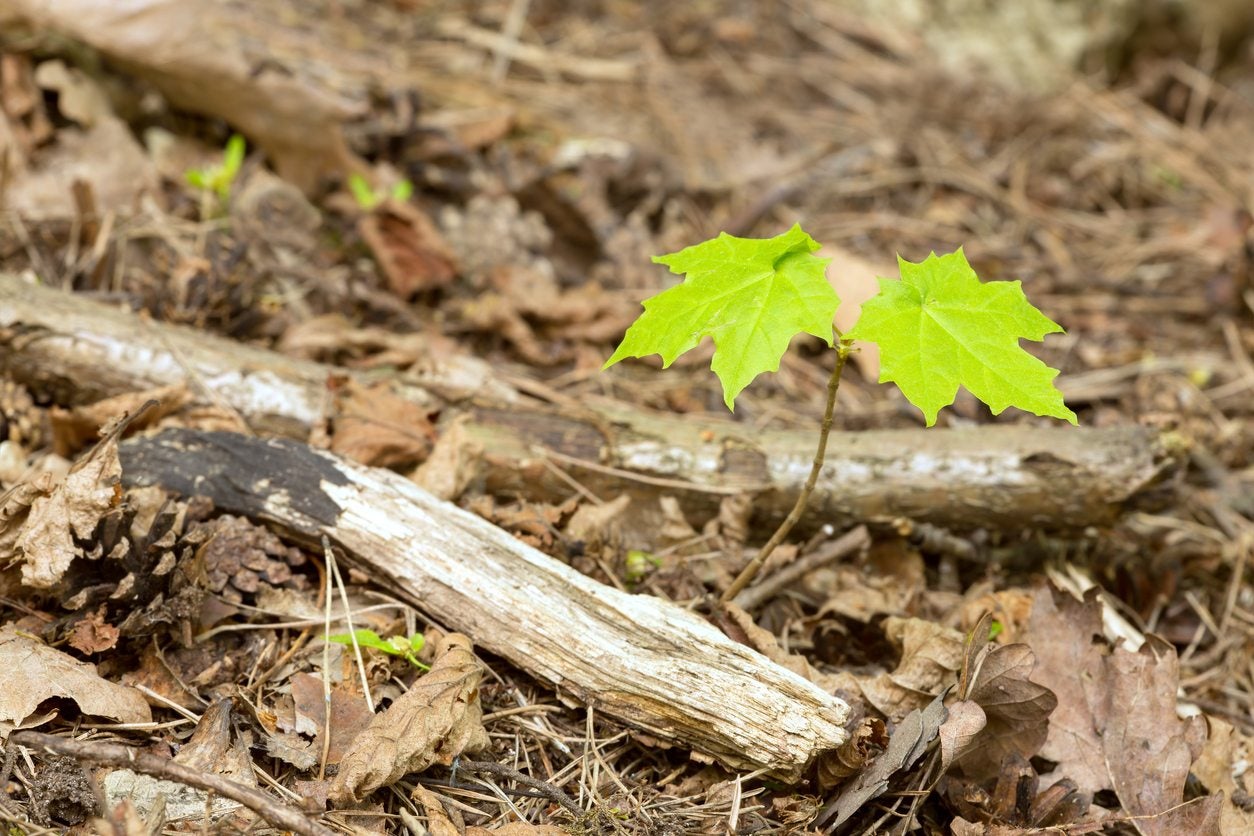Norway Maple Control: How To Manage A Norway Maple Tree


Norway maple trees (Acer platinoides) are wonderful shade trees in the garden. However, they produce many seeds and propagate so easily that they readily escape cultivation. In the wild, Norway maple shades out native plants. Controlling Norway maples is much more difficult than growing them. For information about Norway maple control, read on.
Norway Maple Weed Trees
Norway maples are tall, attractive trees that taller than 65 feet (20 m.). They have dense, rounded canopies that offer deep shade beneath. The trunk of the Norway maple is mottled gray and smooth. The color and texture of the bark contrasts with the dark green, deeply lobed leaves that grow to 6 inches (15 cm.) long and 5 inches (13 cm.) wide. Both the leaves and the twigs “bleed” a milky sap when cut or broken. The trees produce upright clusters of yellowish green flowers that bloom in May. The flowers give way to winged fruit called samaras. These samaras are packed with seeds, and the wind blows them far and wide, allowing the seeds to spread. They germinate promptly, even in full shade. This makes controlling Norway maple difficult. These maples are called “Norway maple weed trees” because they spread so rapidly. Given the vast numbers of seeds produced by the tree and the ease with which they grow, Norway maple weed trees in your backyard spread quickly to nearby forests and fields. Though not native to this country, Norway maple trees are currently found in half the states, and they are considered invasive in most of them.
How to Manage a Norway Maple
Experts addressing the question of how to manage a Norway maple recommend against planting the tree in new developments. Controlling Norway maple populations is a real challenge. If the only new trees are seedlings and saplings, Norway maple control can be affected by weeding these out by hand. A weed wrench pulls Norway maples out of the ground with most of their roots intact. If you want to know how to manage a Norway maple sapling, use pruning loppers to fell the young tree. Then apply an herbicide to the exposed stump. In an area where the trees have already spread into the wild, one method of Norway maple control is pruning out seed-bearing branches each year. This is a good solution for an area under long-term resource management. Pruning stops the tree’s spread without leaving immediate holes in the forest structure. Removing trees is another option. It’s a better option where the natural resource management is short term rather than long term. Girdling big trees by cutting deeply into the bark around the trunk will effectively kill them. Once the trees are removed, it is critical to act quickly to transplant native trees into the spaces the Norway maples used to occupy. Perhaps the best way to do Norway maple control is opting to plant a different type of tree. Native trees like red maple and sweetgum are good alternatives.
Sign up for the Gardening Know How newsletter today and receive a free copy of our e-book "How to Grow Delicious Tomatoes".

Teo Spengler is a master gardener and a docent at the San Francisco Botanical Garden, where she hosts public tours. She has studied horticulture and written about nature, trees, plants, and gardening for more than two decades, following a career as an attorney and legal writer. Her extended family includes some 30 houseplants and hundreds of outdoor plants, including 250 trees, which are her main passion. Spengler currently splits her life between San Francisco and the French Basque Country, though she was raised in Alaska, giving her experience of gardening in a range of climates.